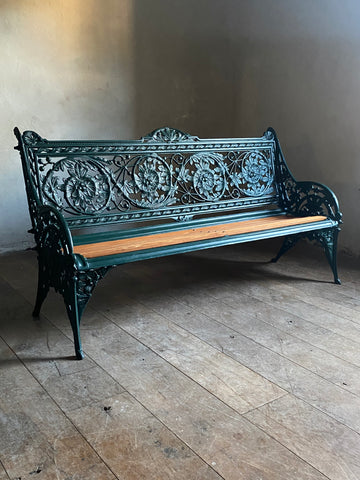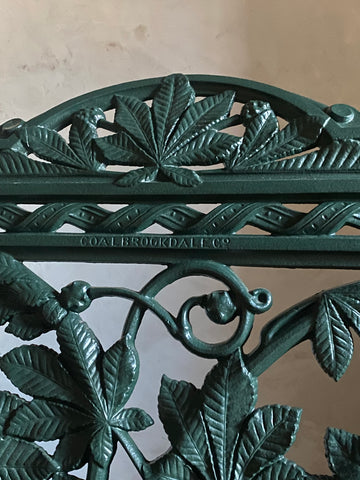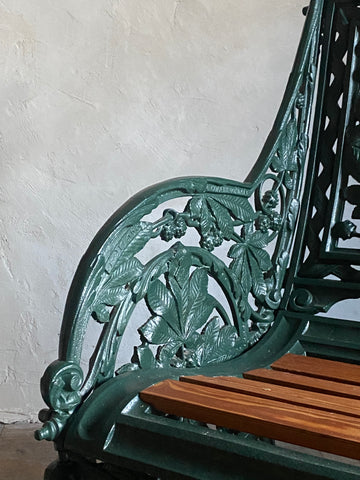It's Not Just Any Old Iron
Iron has been used in English gardens since the early 17th century. Prior to this, decorative work was found only in ecclesiastical settings. Initially, finely wrought iron was used to produce entrance gates and embellish timber doors. The reign of William and Mary heralded some of the finest examples of the blacksmith’s art, likely in the main due to an influx of European master craftsmen.
The format for entrance gates from the late 17th century through to the mid-18th century is fairly standard, with a single or pair of gates with panels to each side, surmounted by a decorative overthrow, such gates as have survived intact have gate piers of stone or brick, mostly square in section, finished with a cornice and topped with a stone ball, heraldic device, or pineapple.
The use of cast iron in the garden really began to take hold in the mid-19th century, though it was not an immediately a popular medium, as the delicacy and hand wrought quality of wrought iron was considered more attractive and appropriate, however, with a huge increase in building work at the turn of the 19th century, the desire for affordable, decent iron work rose quickly. Cast iron could be used to replicate and manufacture designs that would be impossible to make in wrought iron, and the rising middle classes and civic markets demanded high quality, affordable garden ornaments.
Today these are highly desirable and are of a much superior quality to the cheap, imported reproductions available currently. Foundries such as the Colebrookdale Company and Andrew Handyside’s Britannia Works produced some of the best examples.
Competition was fierce in this period and designs were often copied and replicated by numerous manufacturers, in order to safeguard their designs, a system was created, where designs could be registered with the patent office and protected. This began in 1842 and enables us to identify the date and manufacturer of items bearing a registration lozenge. A good example is a wonderful Colebrookdale cast iron bench we sourced; this is the horse chestnut model. The design of this bench, number 217568, was registered and patented by the Coalbrookdale Iron Foundry at The Public Record Office on 23rd March 1868.
The process of casting benches and any cast iron items begins with an original pattern, this was carved in wood by the pattern maker, often to the design of an artist or architect (Christopher Dresser designed a number of Colebrookdale Products).
This was a highly skilled job as it was necessary to account for the contraction of the iron during cooling, once carved the pattern was sealed and pressed into damp sand, then clamped into a frame. Once consolidated, the pattern was removed and the formed mould, dusted with charcoal, to allow a finer textured cast to be taken.
The pattern was then added back to the mould, pouring and breathing holes added, recompressed before finally being removed and the mould reassembled. Molten iron was then poured in and after cooling, removed. This was a highly skilled process, and prone to human error, unlike casting in bronze or lead, imperfections could not be chased out once an item was cast. The detail and fine quality of Colebrookdale benches coupled with their relative scarcity makes these valuable and highly sought after.
To view our current stock please visit: https://yewtreebarn.co.uk/collections/wrs




Leave a comment